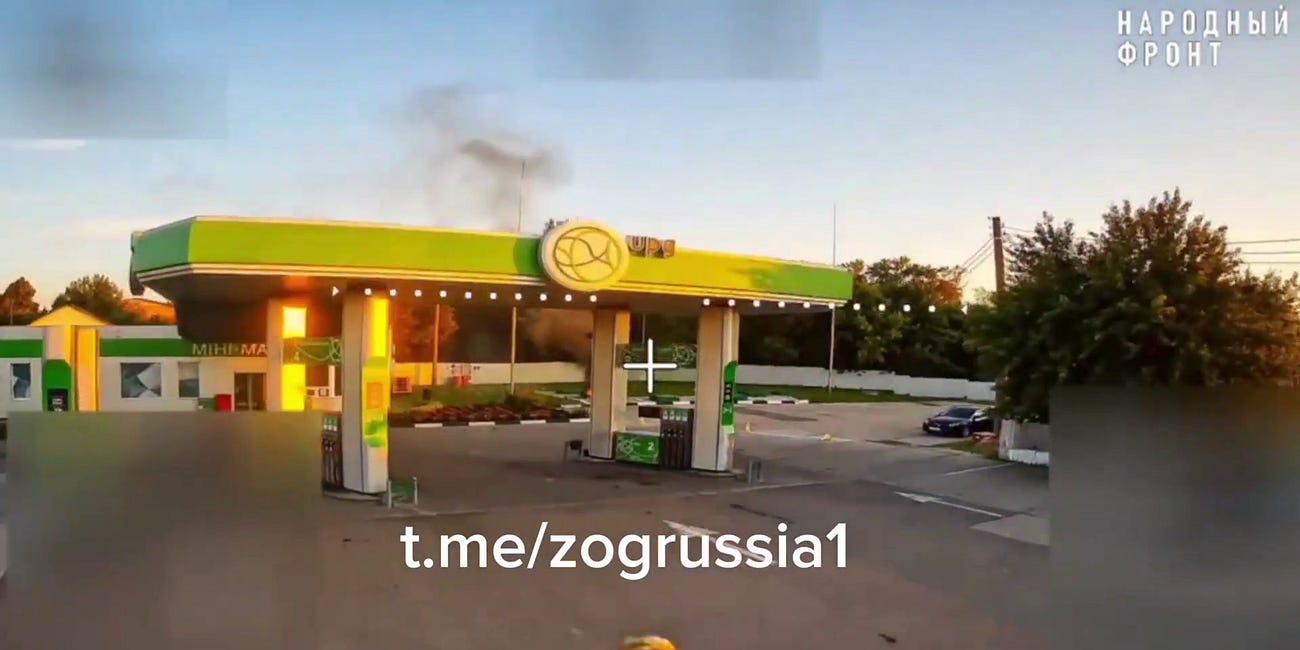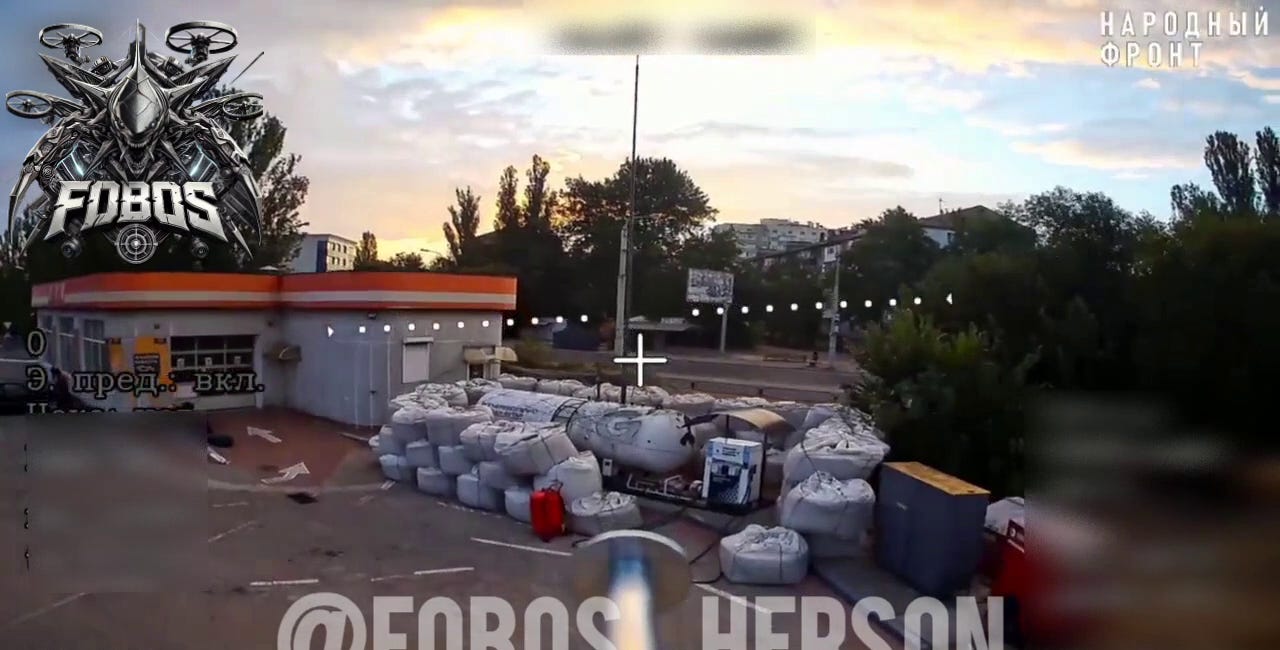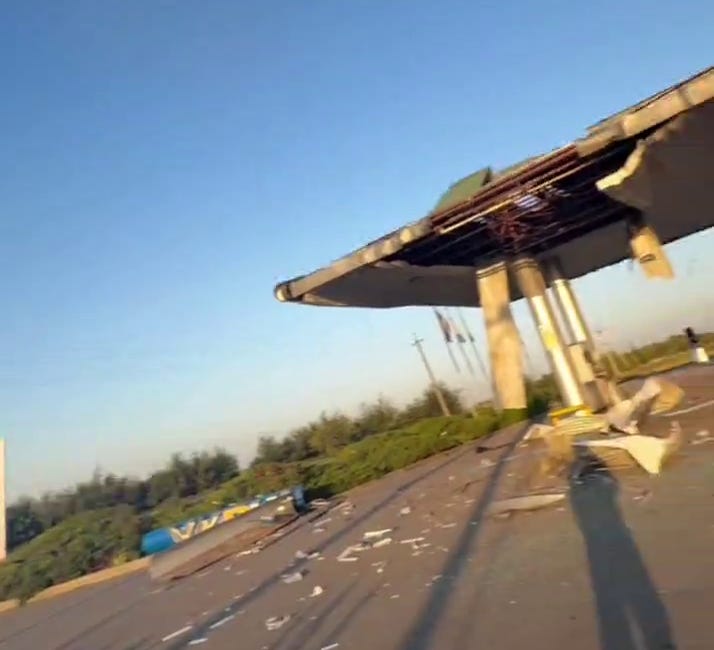There has been another documented attack on a gas/petrol station involving what appears to have been an armed “FPV” multirotor drone, this time at a location near Kramatorsk in the Ukrainian-controlled part of Donetsk province. The targeted gas/petrol station is located around 24 kilometers from the frontlines and is, as such, well within the reach of both Russian armed “FPV” multirotor drones and armed “FPV” fixed-wing drones.
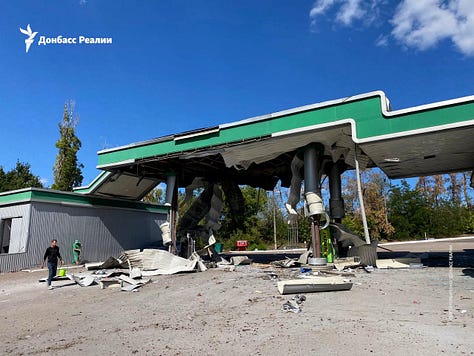
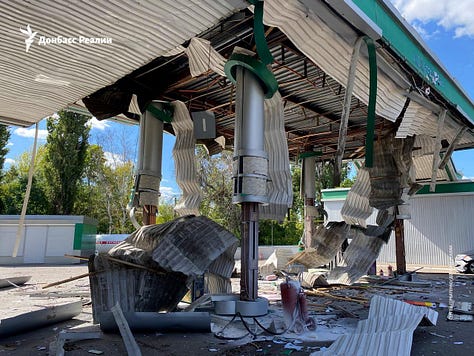

While the Russian military could have simply used a UMPK guided glide bomb or a Shahed-136/Geran-2/Garpiya propeller-driven fixed-wing strike drone to attack this gas/petrol station, armed “FPV” multirotor drones and armed “FPV” fixed-wing drones are available in incomparably greater numbers and cost a small fraction of the aforementioned larger and heavier strike munitions. While armed “FPV” multirotor drones have a much smaller destructive radius, these—particularly those of the fiber optic communication uplink/downlink variety—can be used to undertake the highly surgical micro-level targeting of specific objects, including individual fuel pumps and fuel storage tanks. Given the limited destructive radius of uncrewed aircraft-turned-munitions that are restricted to carrying an explosive payload that weighs just several kilograms, multiple armed “FPV” multirotor drones must be used to render a gas/petrol station wholly unusable. Note the non-targeted above-ground fuel tank—the white cylinder with the red horizontal stripe—in the background of the second image.
For more on the targeting of gas/fuel stations with armed “FPV” multirotor drones, consider reading some of my recent posts (see below). While documented cases of armed “FPV” multirotor drones being used to target gas/petrol stations and local energy storage and distribution facilities more generally are currently limited to the specific context of the Russia-Ukraine War, there is no reason to assume that such attacks will not be seen elsewhere in the world given the fast diffusion of an area of military technology that is heavily reliant on inexpensive and increasingly commoditized commercial-off-the-shelf components.
"FPV" Drone Strikes Against Petrol/Gas Stations In Russia And Ukraine Highlights Increasing Scope For The Surgical Targeting of Fixed Infrastructure Sites
Note: This post expands on the theme of one of my previous posts. This is an issue area that I take great interest in, and the videos featured in this post are likely to be a harbinger of what is to come in terms of short-range strike capabilities worldwide. Expect additional posts dealing with this theme.
Fiber Optic "FPV" Multirotor Drones Used To Target Petrol/Gas Station Across Dnieper River In Kherson Region
Viewing so-called “First Person Video” (“FPV”) drone footage from the Russia-Ukraine War is often a quite sordid affair. There are, however, several “genres” of “FPV” drone footage that are not only more palatable to non-sadistic audiences by virtue of not (directly) depicting the injuring or killing of any human beings but by offering a window into the…
Additional Footage of "FPV" Drone Strikes Against Petrol/Gas Stations In Ukraine
Viewing so-called “First Person Video” (“FPV”) drone footage from the Russia-Ukraine War is often a quite sordid affair. There are, however, several “genres” of “FPV” drone footage that are not only more palatable to non-sadistic audiences by virtue of not (directly) depicting the injuring or killing of any human beings but by offering a window into the…
Video Documents Questionable And Ineffectual Drone Attack On Gas/Petrol Station
As I explained in several recent posts (linked below), armed “first-person video” (“FPV”) multirotor drones facilitate the highly surgical micro-level targeting of fixed—stationary—sites, including critical infrastructure. This includes gas/petrol stations in general and specific fuel pumps and above-ground fuel storage tanks in particular.


